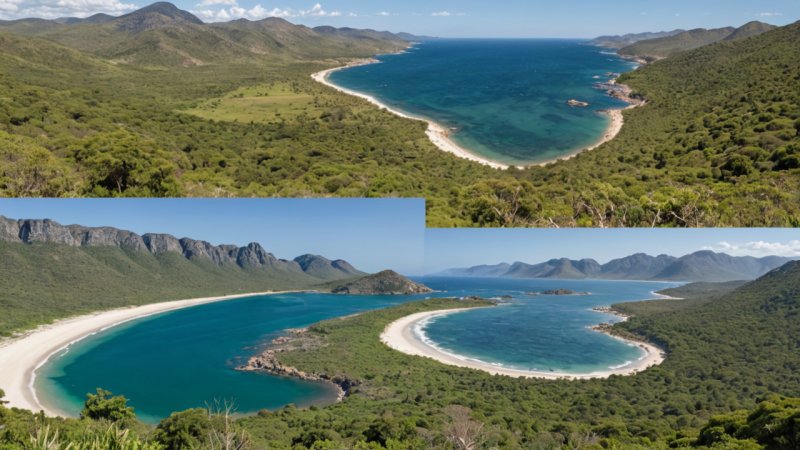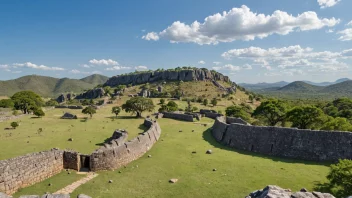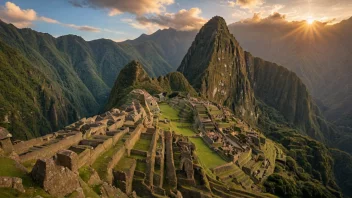Africa is home to some of the world's most stunning and diverse natural parks, each offering unique landscapes, wildlife, and experiences. Among these hidden gems are Tsitsikamma National Park in South Africa and Ruaha National Park in Tanzania. While both parks boast breathtaking beauty and are ideal for nature lovers, they are distinct in their offerings and experiences. This article will compare these two incredible destinations, highlighting their pros and cons, key features, and what makes each one special.
Location and Accessibility
Tsitsikamma National Park is situated along South Africa's southern coast, within the Garden Route National Park. It is easily accessible from major cities like Cape Town and George, making it a popular choice for travelers looking for a quick escape into nature. The park is known for its lush forests, dramatic coastline, and a variety of hiking trails, including the famous Otter Trail.
In contrast, Ruaha National Park is located in central Tanzania and is less accessible than Tsitsikamma. It requires a longer journey, often involving a flight to Iringa followed by a road transfer. However, this remoteness adds to its charm, as Ruaha remains one of Tanzania's lesser-known parks, offering a more intimate wildlife experience away from the crowds.
Wildlife Experiences
Wildlife enthusiasts will find plenty to marvel at in both parks, but the type of wildlife and viewing experiences differ greatly. Tsitsikamma National Park is not primarily known for its wildlife but rather for its marine life and birds. The park's coastal region is home to a variety of seabirds, and the Tsitsikamma Marine Protected Area offers opportunities for snorkeling and kayaking, where visitors can observe the rich underwater ecosystem.
On the other hand, Ruaha National Park is renowned for its diverse wildlife, including large populations of elephants, lions, and rare species like the East African wild dog. The park's vast savannah and dry riverbeds provide excellent game viewing opportunities, especially during the dry season when animals congregate around water sources. For those seeking an authentic safari experience, Ruaha is hard to beat.
Scenery and Landscape
In terms of scenery, both parks offer stunning landscapes but in different forms. Tsitsikamma National Park is characterized by its lush forests, dramatic cliffs, and pristine coastline. The park features beautiful hiking trails that wind through ancient trees, with views of the Indian Ocean crashing against the rocks. The diverse plant life and vibrant colors make it a paradise for photographers and nature lovers alike.
Conversely, Ruaha National Park showcases the beauty of Tanzania's interior, with vast open plains, rolling hills, and acacia woodlands. The park's landscape is more arid compared to Tsitsikamma, but it offers stunning sunsets and the opportunity to see wildlife against a backdrop of golden grasses and baobab trees. Each park has its own unique charm, appealing to different types of travelers.
Activities and Adventures
When it comes to activities, Tsitsikamma National Park is a haven for adventure seekers. Popular activities include hiking, zip-lining, and bungee jumping from the Bloukrans Bridge, one of the highest commercial bungee jumps in the world. The park also offers opportunities for birdwatching and exploring its marine life through kayaking and snorkeling.
In comparison, Ruaha National Park is all about wildlife exploration. Activities here primarily focus on game drives, walking safaris, and birdwatching. Ruaha's guided walking safaris offer a unique opportunity to experience the bush up close, accompanied by knowledgeable guides who share insights about the flora and fauna. This immersive experience is perfect for those looking to connect with nature on a deeper level.
Accommodations and Facilities
In Tsitsikamma National Park, accommodations range from luxury lodges to more budget-friendly options, with several guesthouses and camping sites available. The park is well-equipped with visitor centers, dining options, and facilities that cater to families and tourists.
Ruaha National Park, being more remote, offers a range of accommodations but often at a higher price point. Luxury lodges and tented camps provide a comfortable base for exploring the park, but options may be limited compared to Tsitsikamma. Facilities within Ruaha are basic, emphasizing a more rustic safari experience, which may appeal to dedicated safari-goers.
Best Time to Visit
The best time to visit Tsitsikamma National Park is during the dry season, from May to September, when the weather is mild, and outdoor activities are more enjoyable. However, this is also peak tourist season, so expect larger crowds.
For Ruaha National Park, the dry season from June to October is ideal for wildlife viewing, as animals are easier to spot near water sources. The cooler temperatures during this time also make for comfortable game drives. However, visiting during the rainy season from November to March can also be rewarding, as the park's landscape transforms into a lush green paradise, and many animals give birth to their young.
Conclusion
In summary, both Tsitsikamma National Park and Ruaha National Park offer unique experiences that cater to different types of travelers. Tsitsikamma is perfect for those seeking adventure, beautiful coastal scenery, and a variety of outdoor activities, while Ruaha is ideal for wildlife enthusiasts looking for an authentic safari experience in a remote setting. Your choice will ultimately depend on your interests and the type of experience you seek. Whether you choose the lush forests of Tsitsikamma or the vast savannahs of Ruaha, both parks promise unforgettable memories in the heart of Africa.






